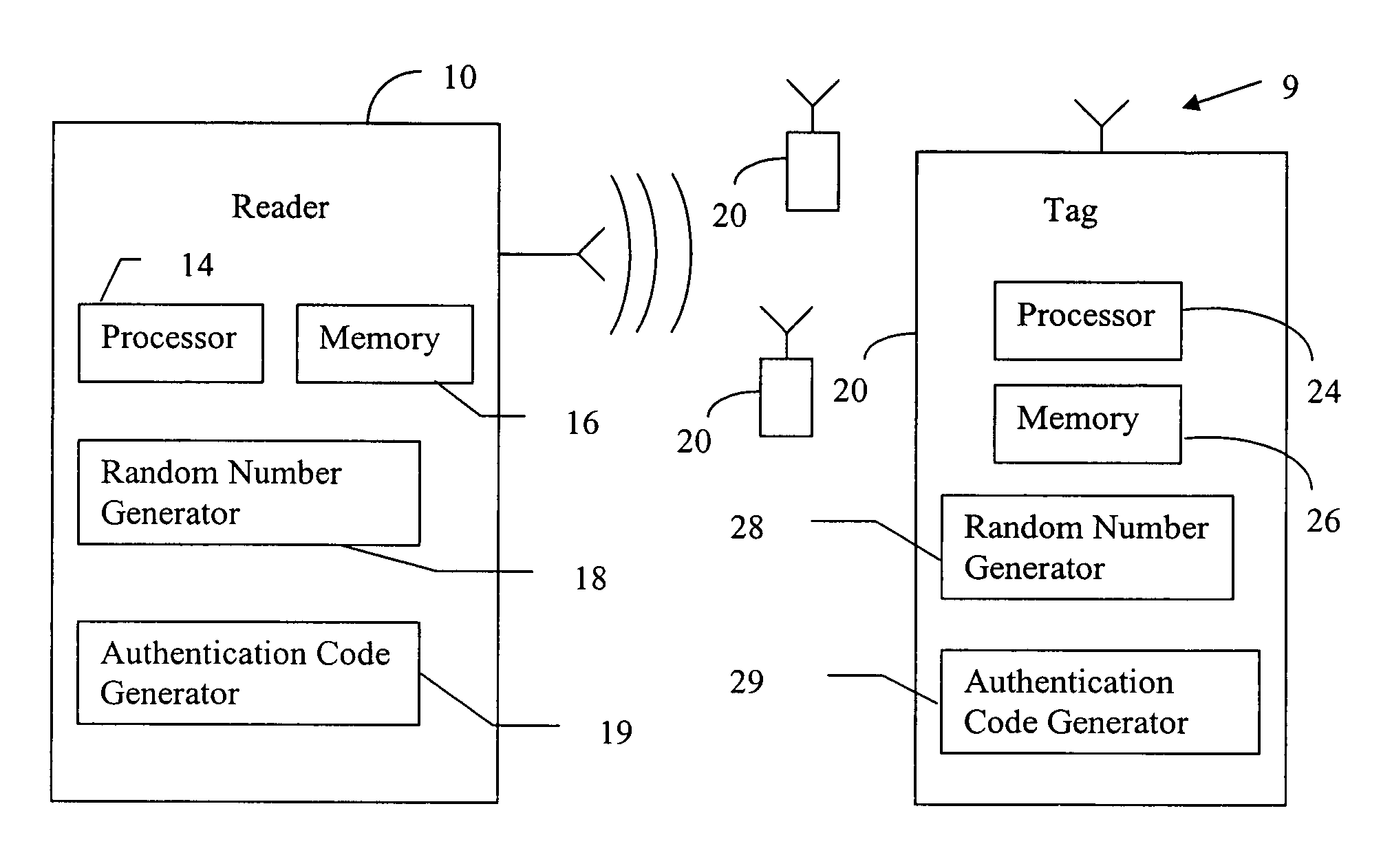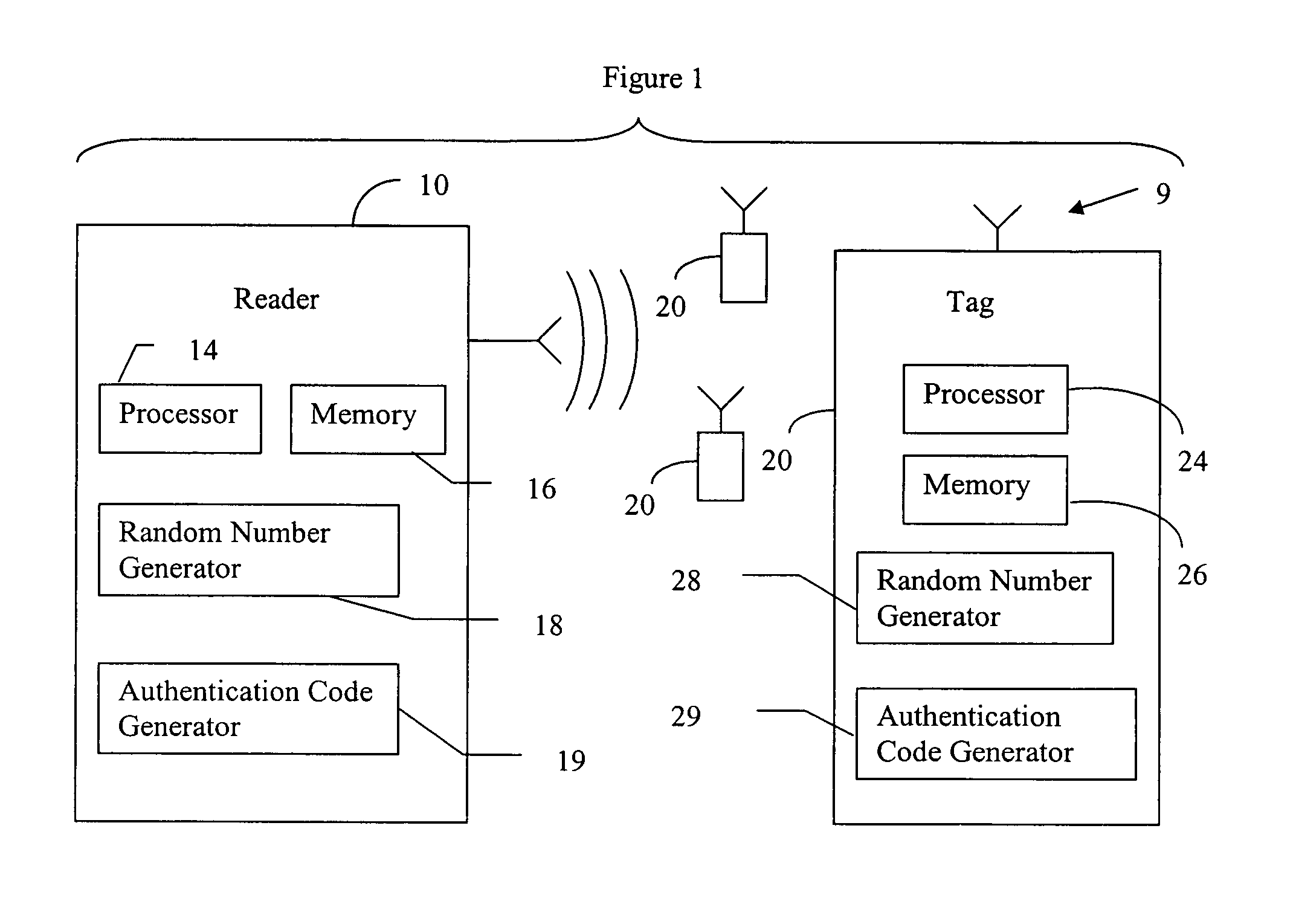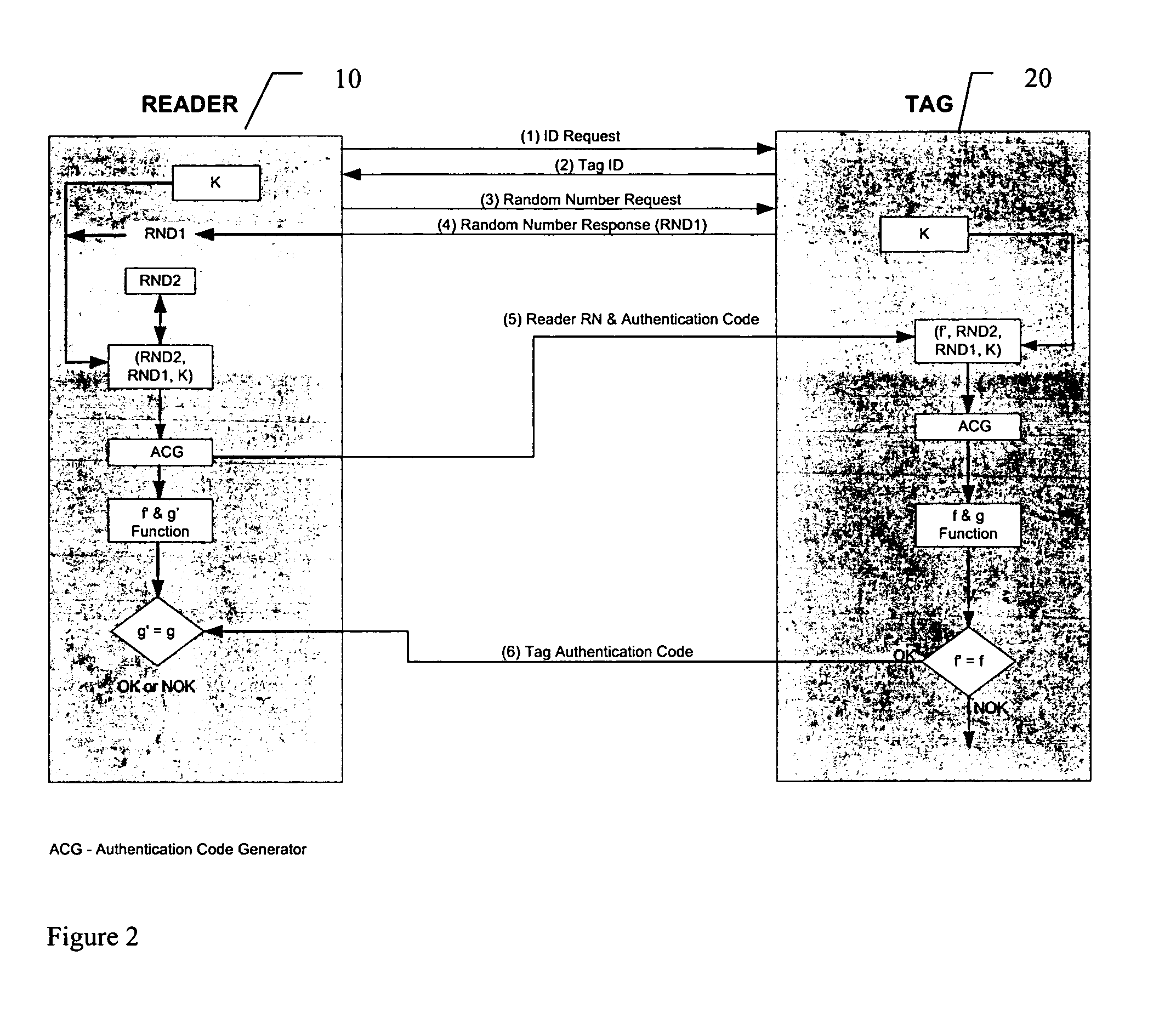RFID mutual authentication verification session
a mutual authentication and verification session technology, applied in the field of radio frequency identification (rfid) systems, can solve the problems of increasing the cost and size of the active tag relative to the passive tag, limiting the amount of data of the passive tag, and increasing the cost and size of the active tag
- Summary
- Abstract
- Description
- Claims
- Application Information
AI Technical Summary
Benefits of technology
Problems solved by technology
Method used
Image
Examples
Embodiment Construction
[0029]In describing a preferred method or protocol of the invention illustrated in the figures, certain specific terminology will be used for the sake of clarity. However, the invention is not intended to be limited to that specific terminology, and it is to be understood that the terminology includes all technical equivalents that perform in a similar manner to accomplish the same or similar result.
[0030]Referring to the drawings, FIG. 1 shows the overall system 9 having both a reader 10 and one or more tags 20. As shown, the reader 10 has a processor 14 for controlling operation of the reader 10, memory 16 for storing data, a random number generator 18 for generating random numbers, and an authentication code generator 19 for generating authentication codes. The tag 20 contains a processor 24 for controlling operation of the tag 20, memory 26 for storing data, a random number generator 28 for generating random numbers, and an authentication code generator 29 for generating authent...
PUM
 Login to View More
Login to View More Abstract
Description
Claims
Application Information
 Login to View More
Login to View More - R&D
- Intellectual Property
- Life Sciences
- Materials
- Tech Scout
- Unparalleled Data Quality
- Higher Quality Content
- 60% Fewer Hallucinations
Browse by: Latest US Patents, China's latest patents, Technical Efficacy Thesaurus, Application Domain, Technology Topic, Popular Technical Reports.
© 2025 PatSnap. All rights reserved.Legal|Privacy policy|Modern Slavery Act Transparency Statement|Sitemap|About US| Contact US: help@patsnap.com



